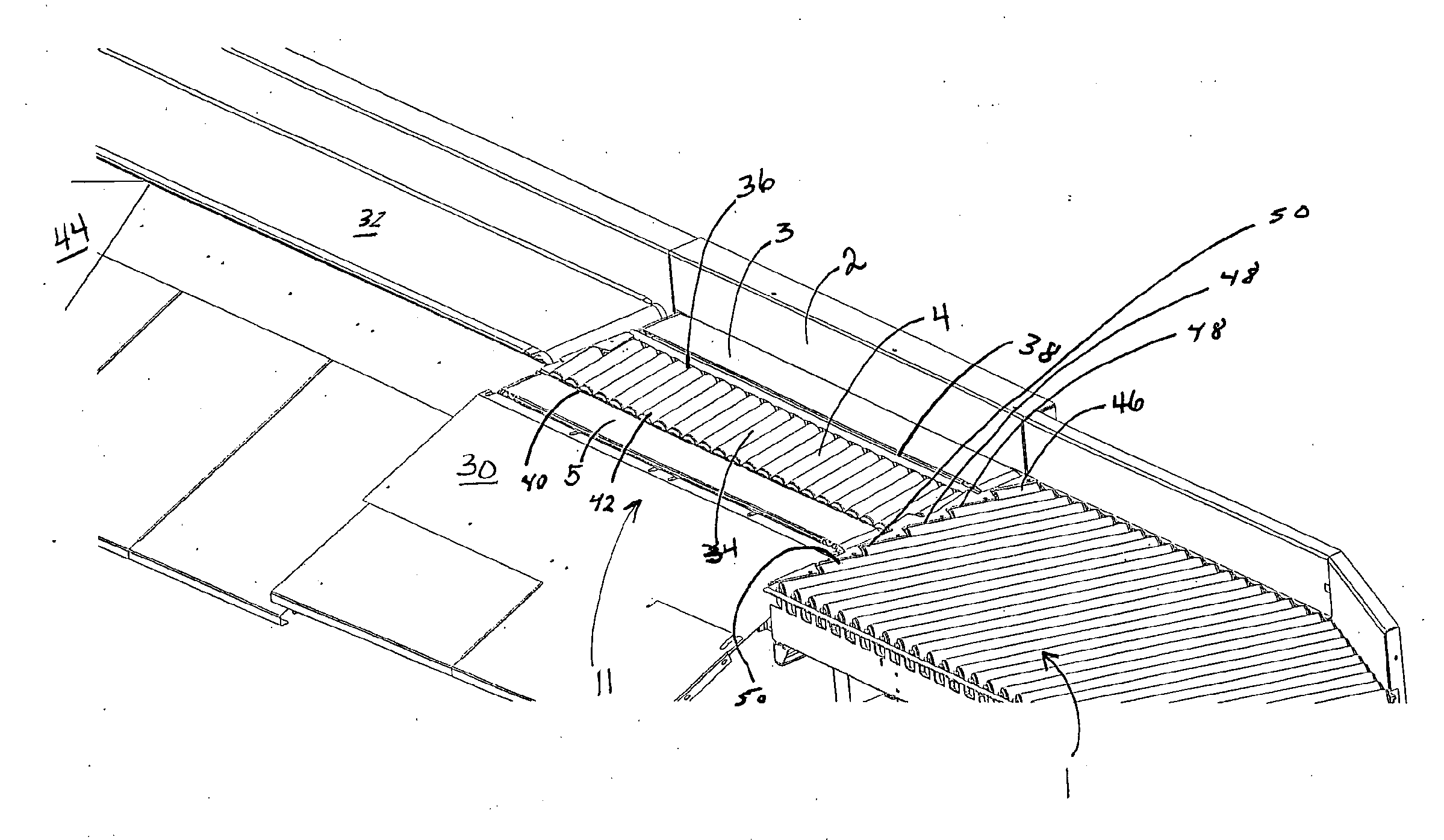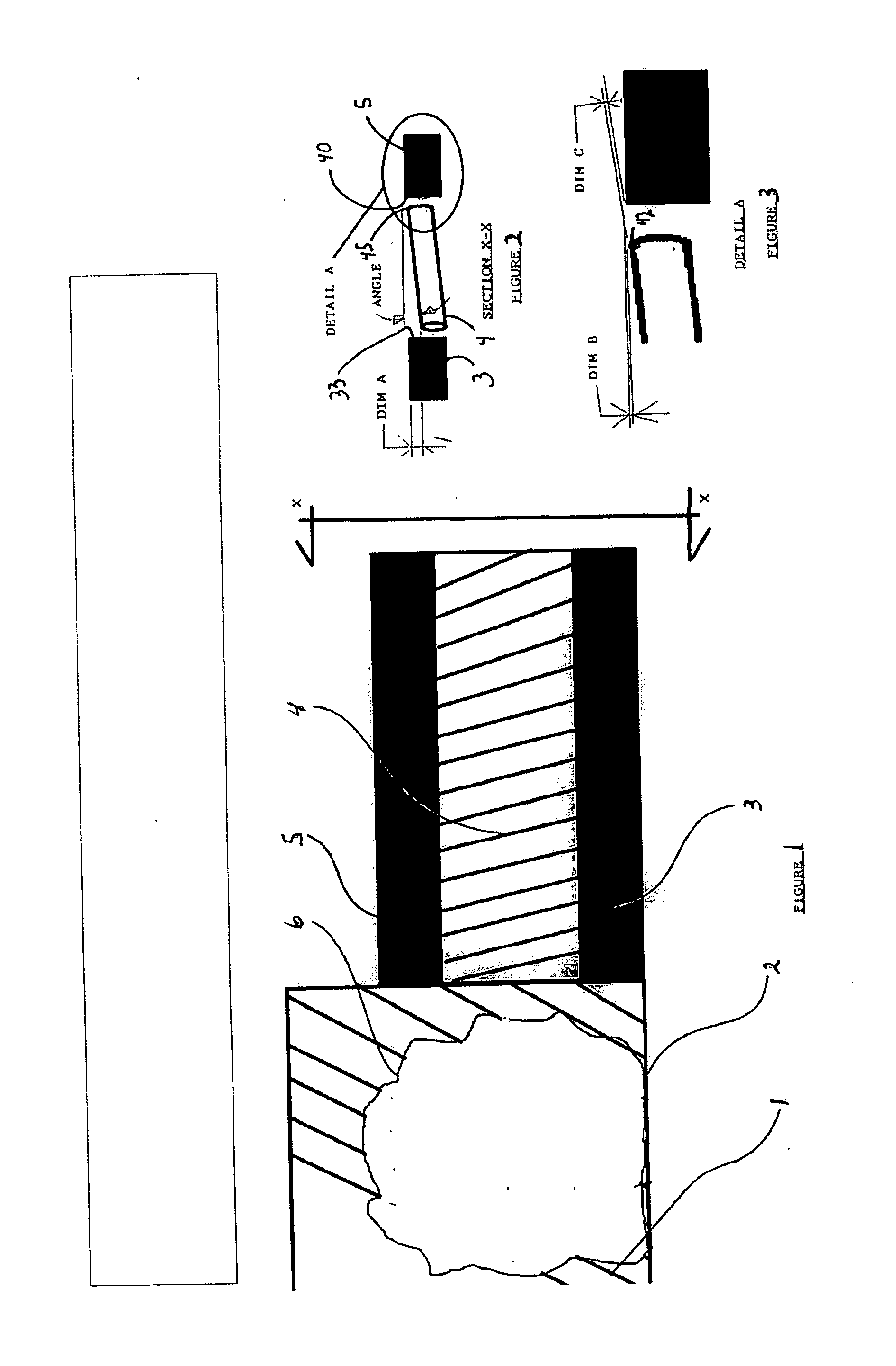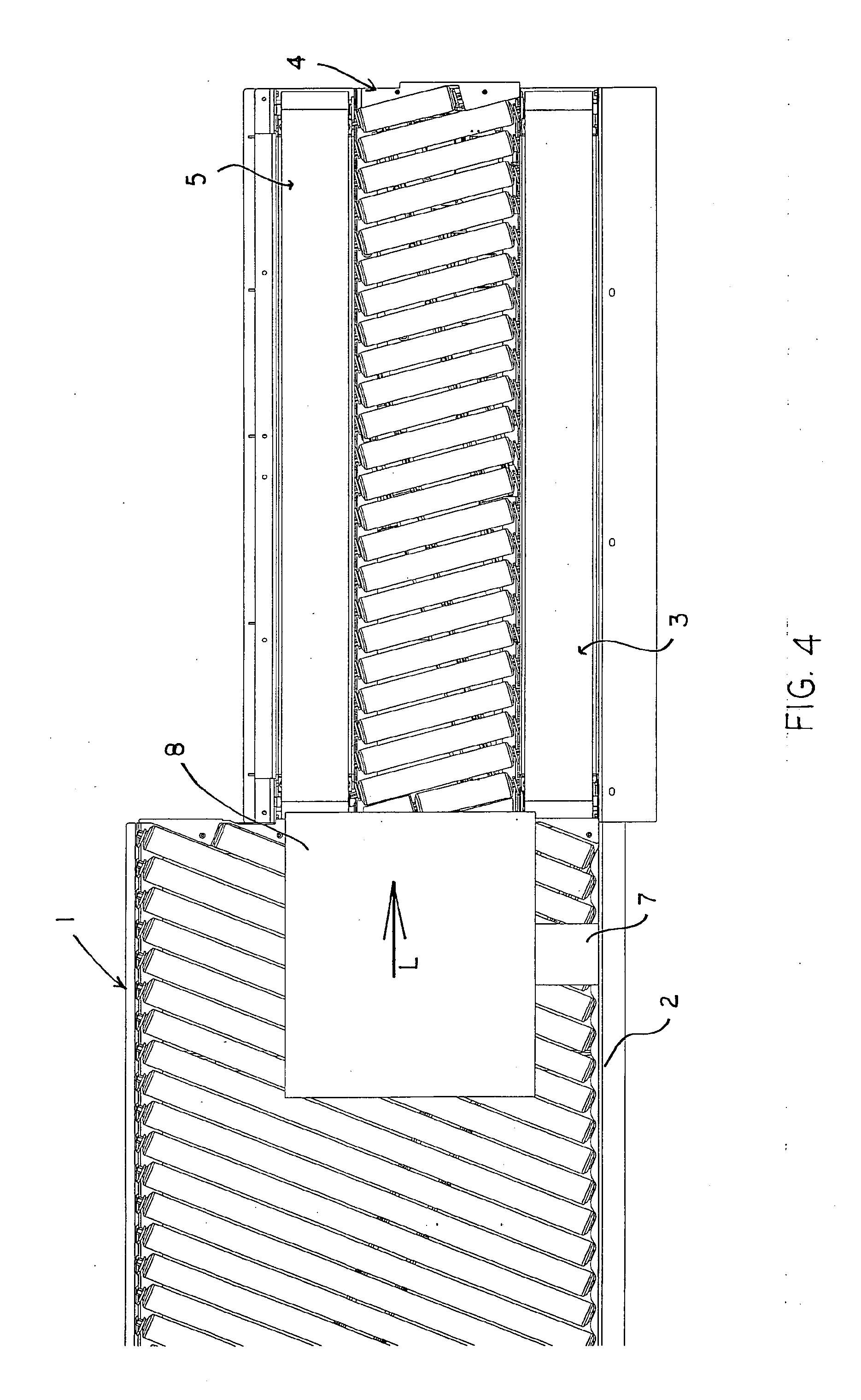Singulator Conveyor System for Rigid Parcel and Large Bags of Small Parcels
a conveyor system and parcel technology, applied in mechanical conveyors, rolling carriages, sorting, etc., can solve problems such as confusion and sorting problems, problems such as scanning and separating packages, and the efficiency of package handling can be seriously reduced, and achieve high friction, low friction surface, and high friction surface
- Summary
- Abstract
- Description
- Claims
- Application Information
AI Technical Summary
Benefits of technology
Problems solved by technology
Method used
Image
Examples
Embodiment Construction
[0044]As shown in FIGS. 1-16, the present invention relates to a conveying system for conveying, aligning, and organizing articles in side-by-side relationship into randomly supplied articles.
[0045]As shown in FIGS. 1-6, the articles such as a bag or small parcels 6 or packages 7, 8 are conveyed from a feed conveyor 1 comprising a plurality of skewed rollers onto a multi-lane singulator conveyor assembly 11 having separating capabilities. The singulator 11 is arranged in alignment with, downstream of, and below the lower end of the feed conveyor 11 for receiving articles therefrom. The singulator includes a central conveying surface including a plurality of driven skewed rollers disposed between a pair of high friction surface belt conveying surfaces. A downstream conveyor receives articles from the singulator spaced apart and in single file.
[0046]In one preferred embodiment, the singulator assembly 11 includes first conveyor 3 including rollers or preferably a belt having a high fr...
PUM
 Login to View More
Login to View More Abstract
Description
Claims
Application Information
 Login to View More
Login to View More - R&D
- Intellectual Property
- Life Sciences
- Materials
- Tech Scout
- Unparalleled Data Quality
- Higher Quality Content
- 60% Fewer Hallucinations
Browse by: Latest US Patents, China's latest patents, Technical Efficacy Thesaurus, Application Domain, Technology Topic, Popular Technical Reports.
© 2025 PatSnap. All rights reserved.Legal|Privacy policy|Modern Slavery Act Transparency Statement|Sitemap|About US| Contact US: help@patsnap.com



